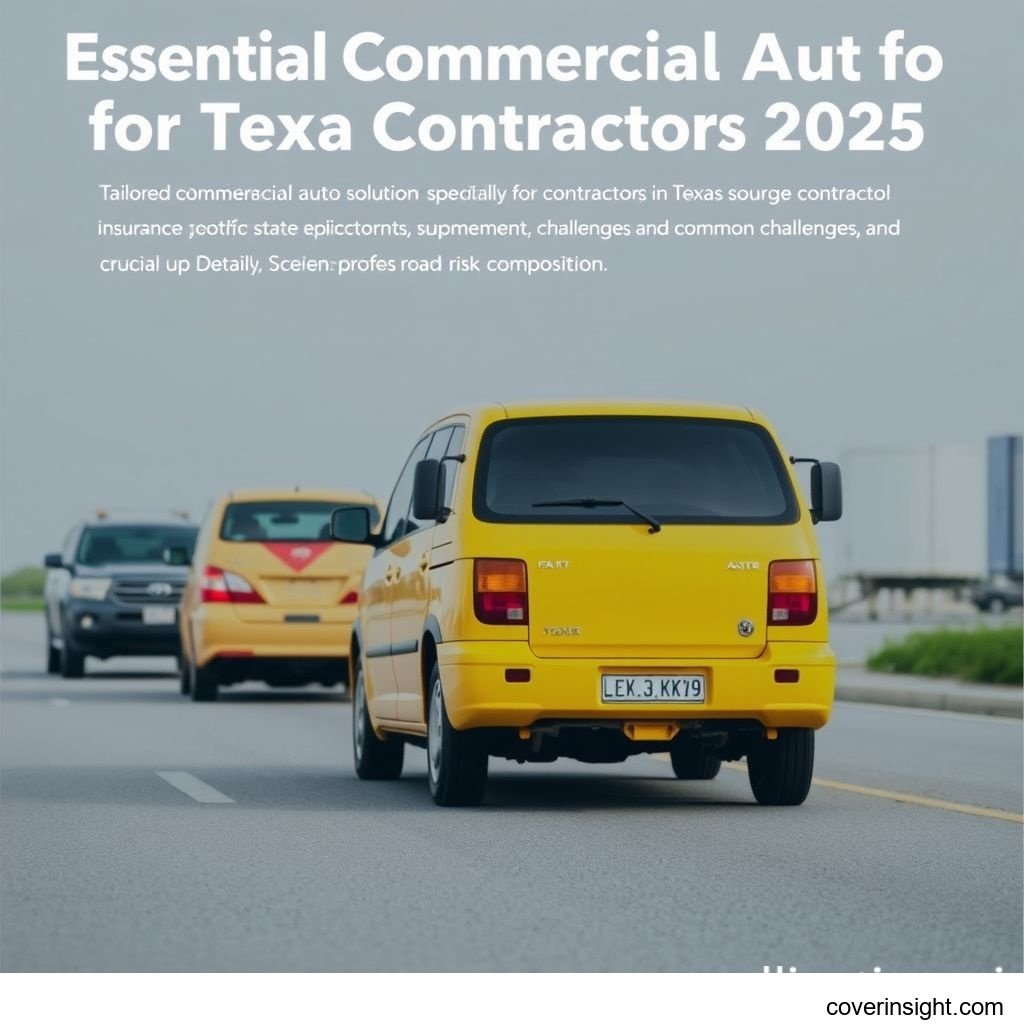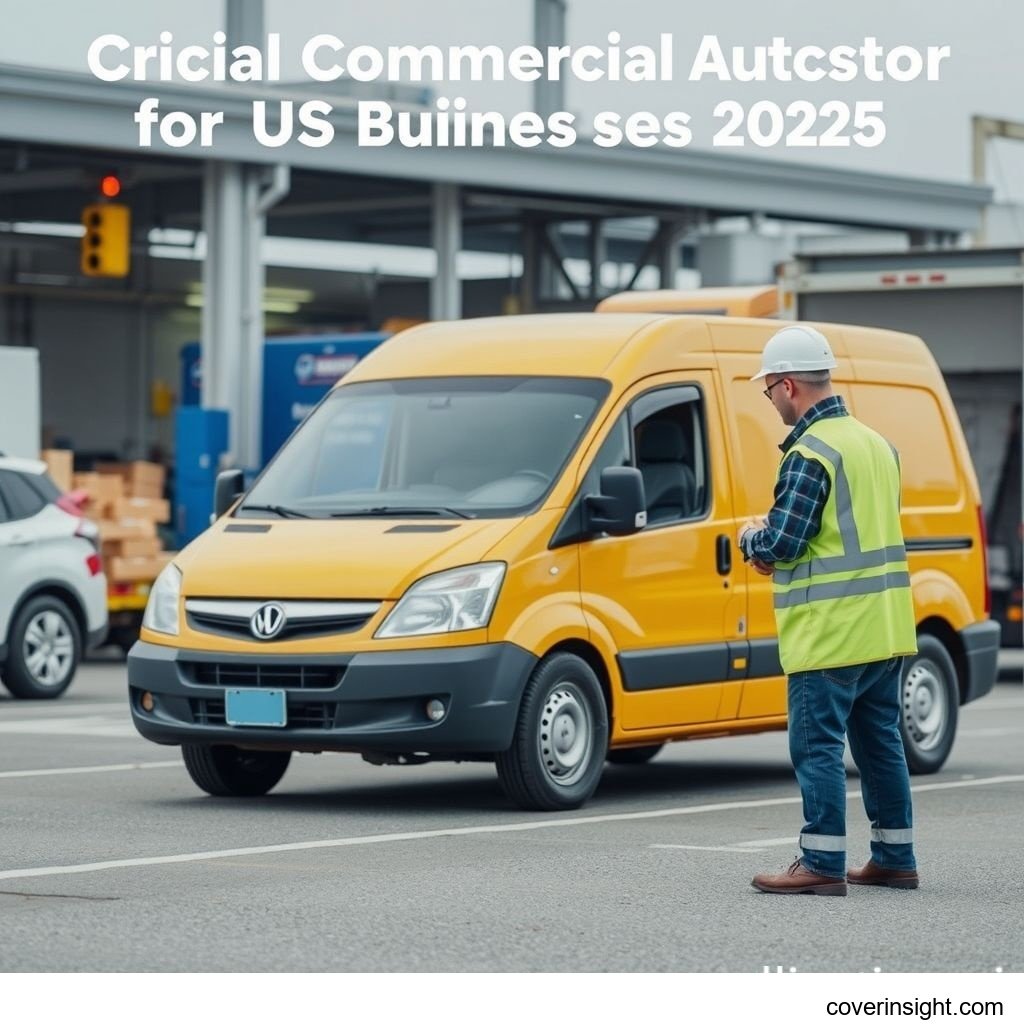Smart Commercial Auto Insurance for US Businesses 2025
Introduction
As we navigate 2025, commercial auto insurance remains a cornerstone for US businesses operating vehicles of any kind. Whether you manage a small fleet of delivery vans, a few contractor trucks, or even a single company car, having robust commercial auto insurance isn't just a smart business decision—it's often a legal imperative. This vital coverage shields your enterprise from the potentially crippling financial fallout of accidents, property damage, and liability claims, ensuring your operations can continue running smoothly, come what may. Understanding the nuances of policies, costs, and evolving regulations is key to making a truly "smart" choice that protects your assets without breaking the bank. For a broader perspective on safeguarding your business, exploring diverse Insurance Resources Global can offer valuable insights.
Coverage Details
Navigating the world of commercial auto insurance can feel a bit like reading a foreign language, but understanding what’s typically covered—and what isn’t—is crucial.
What’s Included
A comprehensive commercial auto insurance policy in the US typically includes several critical components designed to protect your business from a range of scenarios:
-
Bodily Injury Liability: This is the big one, covering medical expenses, lost wages, and pain and suffering for anyone injured in an accident where your business is at fault. It’s about protecting others.
-
Property Damage Liability: This covers the cost of repairing or replacing property belonging to others that your business vehicle damages in an accident. Think of it as protecting their stuff.
-
Collision Coverage: This pays for damage to your own business vehicles, regardless of who was at fault in a collision. It helps get your wheels back on the road.
-
Comprehensive Coverage: For incidents beyond a collision, like theft, vandalism, fire, hail, or striking an animal, comprehensive coverage steps in. It's the "act of God" or "random misfortune" coverage.
-
Uninsured/Underinsured Motorist Coverage: This protects your business if one of your vehicles is involved in an accident with a driver who has no insurance, or not enough to cover the damages. It's like having a backup plan for when others don't.
-
Medical Payments/Personal Injury Protection (PIP): Depending on your state, this may cover medical expenses for your drivers and passengers, regardless of fault.
-
Hired and Non-Owned Auto Coverage: Essential for businesses that sometimes rent vehicles or rely on employees using their personal cars for business errands. This covers liability arising from accidents involving those vehicles.
Common Exclusions
While policies are designed to be comprehensive, there are always some situations that typically aren't covered without specific endorsements or separate policies:
-
Intentional Acts: If a driver intentionally causes damage, it won't be covered. This is pretty standard across all insurance types.
-
Personal Use: If a company vehicle is being used for purely personal reasons outside of work and an accident occurs, it might not be covered under the commercial policy.
-
Wear and Tear: Routine maintenance issues, breakdowns due to age, or general wear and tear are not covered, as these are operational costs, not unforeseen damages.
-
Concealed Damages: Any pre-existing damage to a vehicle not disclosed at the time the policy was issued.
-
Operating Outside Policy Terms: If a vehicle is used for purposes explicitly excluded in the policy (e.g., racing, illegal activities, or hauling prohibited materials), coverage will be denied.
Cost Analysis
For any business, the bottom line matters. Understanding the factors that drive commercial auto insurance premiums and knowing how to potentially reduce them is key to smart financial planning.
Price Factors
The cost of commercial auto insurance isn't a one-size-fits-all number. Several variables play a significant role in determining your premium:
-
Type of Business & Industry: A construction company with heavy machinery faces different risks (and thus, different premiums) than a consulting firm with a single sedan. Industries with higher accident rates or more specialized vehicles will generally pay more.
-
Type, Age, and Value of Vehicles: Newer, more expensive vehicles cost more to repair or replace, and specialized vehicles (like big rigs or passenger buses) naturally carry higher premiums due to their size, weight, and potential for extensive damage.
-
Number of Vehicles: Simply put, more vehicles mean more risk exposure, leading to higher overall costs.
-
Driving Records of Drivers: A clean driving record for your employees is gold. Drivers with past accidents, traffic violations, or DUIs will significantly increase your premiums. It's a simple case of past behavior being a good predictor of future risk.
-
Claims History: A business with a history of frequent or costly claims will be seen as higher risk and face steeper premiums.
-
Coverage Limits and Deductibles: Opting for higher liability limits (which offer more protection) or lower deductibles (meaning you pay less out-of-pocket for claims) will increase your premiums.
-
Location: Urban areas with more traffic congestion and higher accident rates typically lead to higher premiums than rural areas. State-specific regulations also play a part. For instance, according to a recent analysis of US auto insurance trends, premiums for commercial vehicles have seen an average increase of 7-10% year-over-year in certain high-traffic states like California and Florida, largely due to rising repair costs and accident frequency.
Saving Tips
While some factors are out of your control, there are smart strategies to keep your premiums from going through the roof:
-
Prioritize Driver Safety: Implement robust driver training programs, conduct regular background checks, and enforce strict safety policies. A stellar safety record can be your best friend when it comes to insurance costs. For example, "Green Acres Landscaping" in Iowa invested in advanced driver safety training and telematics devices for their fleet. Within two years, their accident rate dropped by 30%, leading to a noticeable reduction in their commercial auto insurance premiums and saving them tens of thousands annually.
-
Increase Deductibles: If your business has a healthy emergency fund, consider opting for a higher deductible. This means you'll pay more out-of-pocket for a claim, but your monthly or annual premium will be lower.
-
Bundle Policies: Many insurers offer discounts when you bundle commercial auto insurance with other policies, such as general liability or property insurance. It's often cheaper to get everything under one roof.
-
Shop Around: Don't just stick with the first quote you get. Obtain multiple quotes from different providers. A quick trip to your State Insurance Departments website can help you find licensed insurers in your area and compare options effectively.
-
Review Coverage Annually: Your business needs evolve. What was appropriate last year might not be today. Regularly review your coverage to ensure you’re not over-insured or under-insured.
FAQs
How much does commercial auto insurance cost?
The cost varies wildly, from a few hundred dollars a year for a single, low-risk vehicle to tens of thousands for large fleets or high-risk operations. As discussed, it depends on a multitude of factors including your business type, vehicle value, driver records, and coverage choices.
What affects premiums?
As detailed in the "Price Factors" section, key elements include the type of business, number and type of vehicles, driver records, claims history, chosen coverage limits, and your business's geographic location. Every piece of the puzzle contributes to the final premium.
Is it mandatory?
In most US states, commercial auto insurance is legally mandatory, particularly for liability coverage. Just like personal car insurance, minimum liability limits are required to operate a business vehicle on public roads. Failing to carry adequate coverage can result in significant fines, penalties, and even business suspension. For detailed state-specific requirements, consulting the National Association of Insurance Commissioners website is an excellent starting point.
How to choose?
Choosing the right policy involves assessing your specific business risks, understanding the types of coverage available, comparing quotes from multiple reputable insurers, and considering their financial strength and customer service reputation. Don't be afraid to ask plenty of questions.
Consequences of no coverage?
Operating without commercial auto insurance is a gamble you can't afford to lose. Consequences range from severe legal penalties, fines, and impounded vehicles to devastating financial ruin in the event of an accident. Without insurance, your business would be solely responsible for all damages, medical bills, and legal fees, which could easily run into the millions, pushing even a solvent company into bankruptcy. For more general guidelines on how to secure your business's foundations, consider exploring resources on US Insurance Home.
Author Insight & Experience
Based on my experience observing the ebb and flow of small and medium-sized businesses across the US, one truth stands out: the importance of a robust commercial auto insurance policy is often underestimated until it's desperately needed. I've seen firsthand how a single unexpected incident—a fender bender, a truck veering off-road, or even a minor injury claim—can send shockwaves through a company, potentially halting operations or wiping out years of hard-earned profits. It's not just about compliance; it's about peace of mind, about being able to tell your team, "We're covered," when the unexpected inevitably happens. Investing in smart, tailored coverage isn't an expense; it's an indispensable shield for your business's future.
Further reading: Insurance Resources Global
Further reading: US Insurance Home








Comments